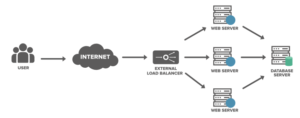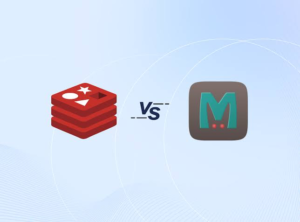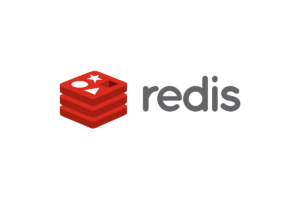
Introduction
MySQL is an open-source relational database management system (RDBMS) that is widely used for storing, managing, and retrieving structured data. It is a crucial component in many web applications, software systems, and data-driven projects. Because of its efficiency, scalability, and user-friendly nature, MySQL emerges as the best option for applications of all sizes, from small-scale to large-scale applications.
Understanding to MySQL
MySQL is Relational Database
MySQL, as a Relational Database Management System (RDBMS), refers to a software application designed to create, manage, and manipulate relational databases. In this context, a relational database organizes and stores data in structured tables that consist of rows and columns. MySQL allows the efficient storage, retrieval, and manipulation of data through its set of well-defined principles and functionalities inherent to RDBMS technology.
Open-Source and Community-Driven
MySQL is an example of open-source software, embodying a philosophy of transparency and collaboration. As an open-source Relational Database Management System (RDBMS), MySQL’s source code is freely accessible, empowering developers to examine, modify, and enhance the software to suit their specified needs. This open nature encourages innovation, encourages peer review, and engenders a vibrant community of contributors who collectively refine and extend the software’s capabilities. The collaborative spirit inherent in MySQL’s open-source model not only ensures continuous improvement but also promotes the democratization of technology, making advanced data management accessible to a broad spectrum of users.
SQL (Structured Query Language)
MySQL relies on SQL (Structured Query Language) as its primary mode of interaction with the database. MySQL follows the SQL standard while also providing some additional features and functionalities specific to its implementation. Here are some key aspects of using SQL in MySQL
CREATE TABLE users (
id INT AUTO_INCREMENT PRIMARY KEY,
username VARCHAR(50) NOT NULL,
email VARCHAR(100) UNIQUE,
created_at TIMESTAMP DEFAULT CURRENT_TIMESTAMP
);
Features and Capabilities
- Data Types : MySQL supports various data types such as integers, strings, dates, and more.
- Indexing : It offers indexing mechanisms to improve data retrieval speed.
- ACID Compliance : MySQL ensures data integrity and consistency through ACID (Atomicity, Consistency, Isolation, Durability) properties.
- Transactions : It supports transactions, which allow you to group multiple database operations into a single unit of work.
- Triggers and Stored Procedures : MySQL allows you to define triggers (automated actions based on events) and stored procedures (reusable blocks of SQL code).
- Replication : Supporting replication, MySQL empowers the duplication of data across multiple servers, ensuring redundancy and facilitating load distribution.
- Security : It provides user authentication and authorization features to control access to the database.
Usage Scenarios
- Web Applications : MySQL is commonly used in web applications to store user data, content, and application logic.
- Content Management Systems (CMS) : Many CMS platforms, like WordPress, use MySQL to store and manage website content.
- Data Warehousing : MySQL can be used to build data warehouses for analytics and reporting.
- E-commerce : Online stores often use MySQL to manage product information, orders, and customer data.
- Embedded Systems : MySQL can be embedded into software applications to manage local data storage.
Tools and Interfaces
MySQL offers a range of tools and interfaces that facilitate the management, development, and administration of databases. These tools cater to different user needs, from database administrators and developers to data analysts and end-users. Here are some notable tools and interfaces for MySQL:
- MySQL Workbench : MySQL Workbench is a powerful graphical tool that provides a unified visual interface for database design, development, and administration. It allows you to create, modify, and manage database schemas, tables, and relationships. Workbench also includes SQL development features, visual query building, performance tuning, and database migration capabilities.
- MySQL Command-Line Client : The MySQL Command-Line Client is a text-based interface that enables direct interaction with the MySQL server using SQL commands. It’s a fundamental tool for executing SQL statements, managing databases, and performing various administrative tasks.
- phpMyAdmin : phpMyAdmin is a web-based tool written in PHP that provides a user-friendly interface for managing MySQL databases. It allows you to perform tasks such as database creation, table design, data manipulation, and user management through a web browser.
MySQL vs SQL
SQL (Structured Query Language) is a standardized programming language that serves as the common thread among various relational database management systems (RDBMS), including MySQL. It provides a consistent and powerful interface for managing and manipulating structured data within databases. SQL encompasses a range of commands for defining database structures, querying data, inserting, updating, and deleting records, as well as controlling access and security. Its versatility lies in its ability to bridge the gap between users and databases, enabling them to interact seamlessly with different RDBMS platforms, such as Oracle, PostgreSQL, and Microsoft SQL Server. SQL’s importance stems from its role as the universal language that empowers developers, database administrators, and analysts to harness the capabilities of relational databases, regardless of the specific RDBMS they are using.
MySQL, on the other hand, represents a specific implementation of an RDBMS that employs SQL as its query language. Developed by Oracle Corporation, MySQL stands as one of the most widely adopted open-source RDBMS solutions. It provides a comprehensive suite of tools and features, ranging from data storage, indexing, and transactions to replication and security mechanisms. MySQL’s popularity arises from its efficiency, scalability, and active community support, making it a favored choice for various applications, from small-scale projects to large-scale enterprise systems. While MySQL and SQL are closely linked, it’s important to note that SQL spans beyond MySQL, embracing diverse RDBMS platforms that uphold structured data management principles.
Conclusion
In conclusion, MySQL stands as a cornerstone in the realm of relational database management systems (RDBMS), offering a potent combination of open-source accessibility, powerful features, and widespread adoption. Excelling as an RDBMS, MySQL adeptly structures and manages data via tables, rows, and columns, facilitating effective storage, retrieval, and manipulation.
Its adherence to the SQL standard empowers users to interact with databases using a universally recognized language, facilitating tasks ranging from data insertion and retrieval to complex queries and schema modifications. MySQL’s robust capabilities encompass ACID compliance, transactions, indexing, and data integrity enforcement, ensuring reliability and consistency in data management.
The active and diverse MySQL community further elevates its value, providing resources, support, and collaborative opportunities that foster continuous growth and innovation. MySQL’s versatility makes it a natural fit for various applications, from web development and content management to data warehousing and analytics. Amid evolving technology, MySQL endures as a dynamic force, empowering developers, administrators, and businesses to propel data-driven initiatives.



